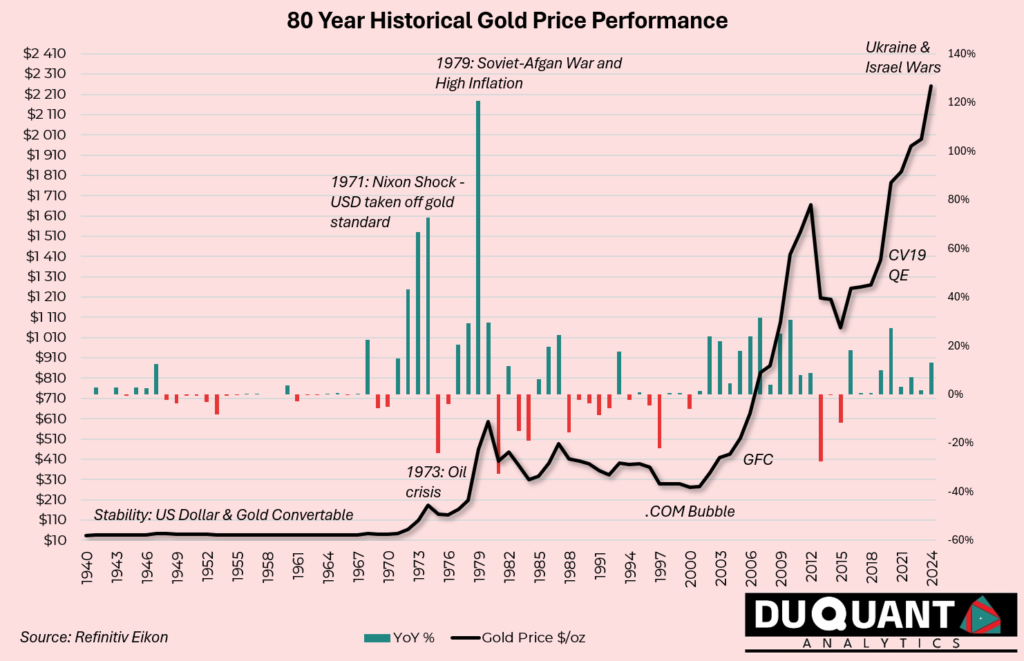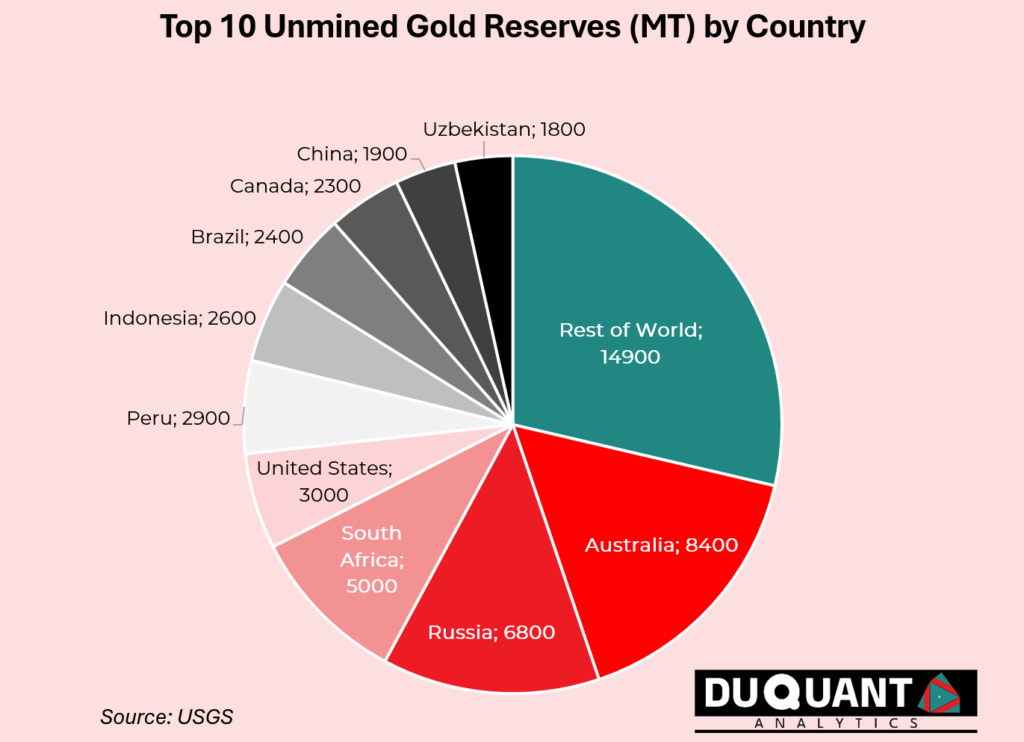
Navigating GOLD (Au)
Scientific Properties of Gold
Gold, with the chemical symbol Au and atomic number 79, is a scarce and valuable noble metal known for its exceptional resistance to corrosion and oxidation. It is remarkably malleable and ductile which allows it to be shaped into thin sheets or wires. Gold has a high density, distinct yellow colour, excellent thermal and electrical conductivity, and high reflectivity of light which makes it versatile for various applications. Gold has a melting point of 1064°C and a boiling point of 2856°C. All these properties that are unique to gold underpin its ongoing popularity and use.

Uses and Future Applications
Gold is a popular material used in jewellery and ornaments due to its lustre, malleability and resistance. It is also significant in terms of being used as a currency in the form of coins and bars/bullions and also as a form of investment with many physical gold backed exchange-traded funds (ETFs) providing liquid exposure to the price, or as a traditional form of investment with physical gold that is usually bought at a premium price and requires storage in vaults. Give that gold has excellent conductivity and resistance to corrosion it is also ideal for use in connectors, switches and components in electronics. Gold also has applications in Aerospace where gold coated materials are use in spacecraft and satellites for radiation shielding and reflective surfaces. Gold particles are also used in diagnostic tests and medical treatments such as targeted drug delivery systems and cancer therapies.
Given the increase in global tensions, rapidly expanding money supply and high inflation, we are likely to see a debasement in all fiat currencies. This is already being seen in the increase in gold price across all currencies to record highs in 2024. A technical breakout in the gold price of this size is likely to garner the attention of many investors. Given that majority of the buying has taken place by the east, we are likely to see further gold buying by western investors now that a bull market rally is in scope.

Largest Sources and Producers of Gold
According to the US Geological Survey (USGS), global gold reserves stand at 52000 MT with the below countries making up the largest known reserves. The top 10 countries with the largest known reserves are Australia, Russia, South Africa, United States, Peru, Indonesia, Brazil, Canada, China and Uzbekistan.


In terms of actual gold produced on an annual basis, there are differences compared to where most of the gold is situated. For example, China was the largest producer of gold in 2022 at 330 tons, but in terms of provable reserves by the USGS, China is seventh on the list, indicating that they are mining at a faster pace. These dynamics are largely driven my macro and micro economic factors that are unique to the individual jurisdictions, such as energy and labour costs, liquidity and access to funding, political stability and investor appetite. The lower the extraction costs, the more feasible it will be to mine. The figure below indicates the top 20 gold producing countries for 2022.

The Remarkable History of Gold
Gold has captivated humans for thousands of years, having shaped the world, cultures and forming the foundation for empires across and monetary systems across the globe. With gold being such a dense, heavy and non-corrosive element, this made it a convenient method of transporting value as coins. In the bartering economies of the past it was common to trade the weight of one commodity for another, thus the compact unit weight and value of gold was ideal as an exchange for other goods, and as a store of wealth that could be passed down to generations. From its revered use in ancient Egypt around 2600 BCE, the Egyptians covered their thrones in gold as an earmark of wealth and power. The minting of the first gold coins took place in Lydia around 600 BCE. The Roman Empire had its solidus coin that became the cornerstone of trade across Europe. In South America during the 18th century, the Brazilian Gold Rush led to the rise in cities like Ouro Preto and significant Portuguese colonial expansion. The 19th century brought more dramatic gold rushes, like the 1848 California Gold rush, and those in Australia in New South Wales and Victoria, which lead to mass migration as people searched for ‘the land of milk and honey’. The Klondike Gold Rush of 1896 drew thousands to Canada’s Yukon, despite the cold conditions. In 1886 the motherlode of all Gold discoveries took place in Johannesburg South Africa’s Witwatersrand Basin, which to this day has produced more than 30% of all gold mined in recorded history. South Africa still holds a significant portion of unmined gold, trapped deep within the earth with higher costs to sink shafts, which has become increasingly difficult to fund given the uncertainty and instability in South Africa.

Today, gold remains an integral part of the global economy, serving as a hedge against inflation and is remarkably uncorrelated to the markets during times of turmoil. The timeless allure of gold is multifaceted and continues to capture our curiosity. Since the US Dollar was taken off the gold standard in 1971, gold has become an important asset class for protecting wealth against inflation, geopolitical tensions and recessions.
Navigating Gold
Navigating Gold What is so special about this lustrous yellow metal? Scientific Properties of Gold…

